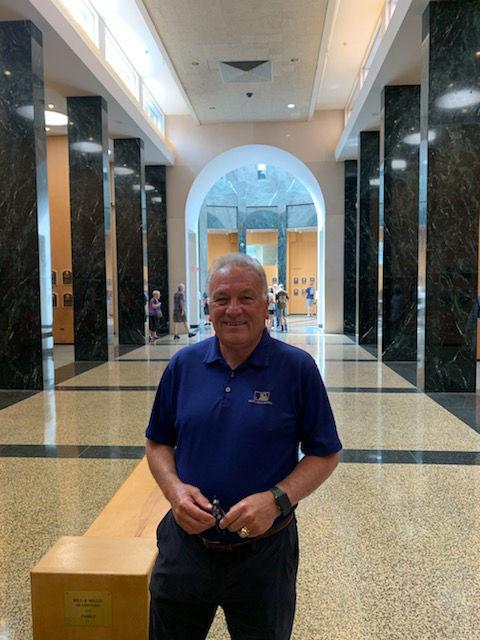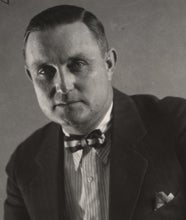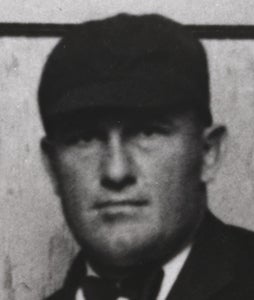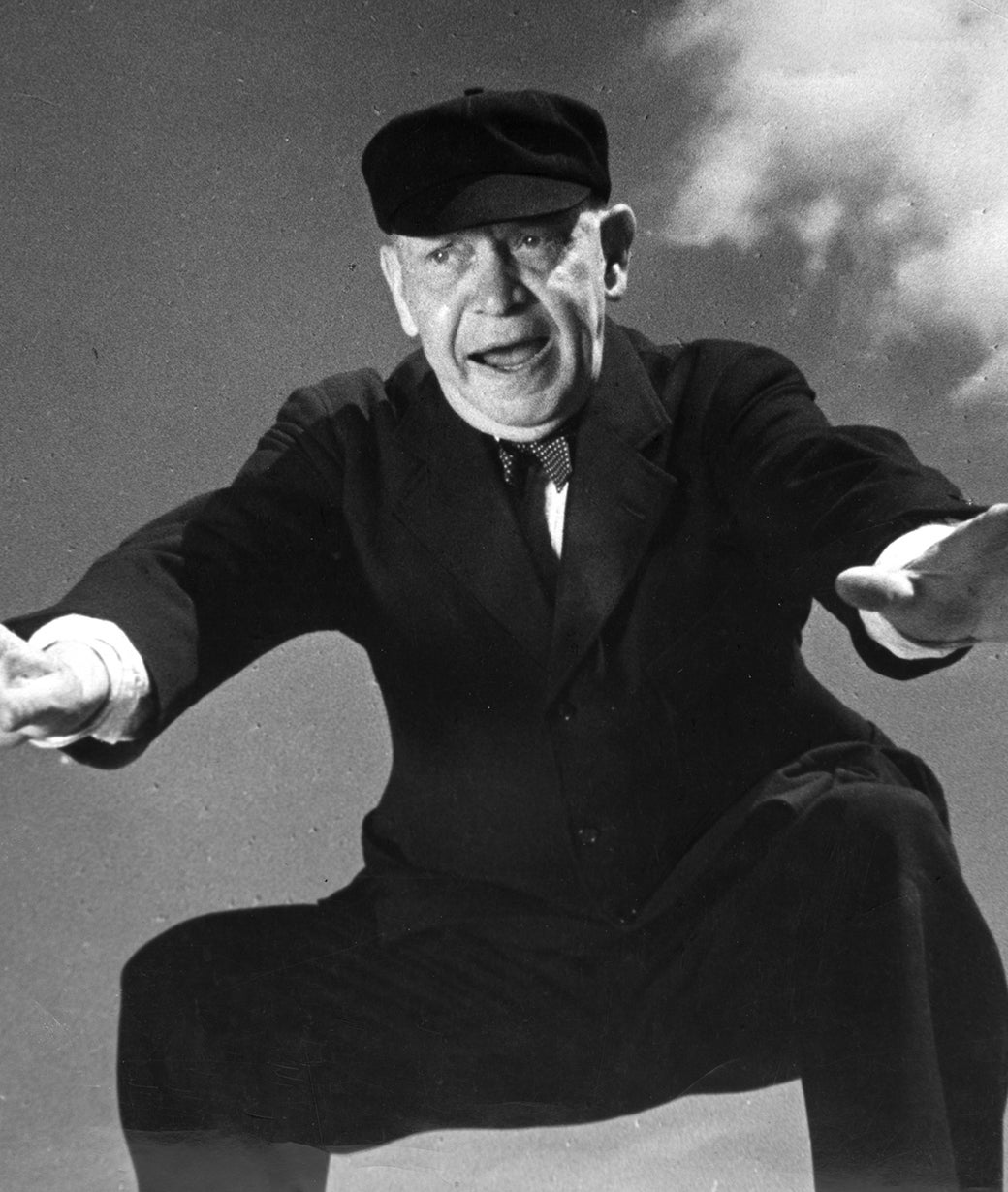- Home
- Our Stories
- Great Call: Ed Montague visits Cooperstown
Great Call: Ed Montague visits Cooperstown
Ed Montague, a revered figure in the big league umpiring fraternity, is part of a baseball lineage that includes his father and two sons. So he jumped at the opportunity to make a recent trip across the country to visit the National Baseball Hall of Fame and Museum.
Montague spent 34 seasons as a big league arbiter before retiring after the 2009 campaign. He left the diamond having worked 4,369 games, a total that ranked eighth all-time when he hung up his count indicator and plate brush and sits 13th overall today.
Following his work on the field, Montague became an Umpire Supervisor for Major League Baseball in 2011. Currently, he’s an MLB Umpire Observer in the Bay Area, responsible for evaluation of performance.
Besides four All-Star Games (1982, 1990, 1998, 2004), Montague umpired 99 career postseason contests, including seven Division Series (1981, 1995, 2000, 2003-05, 2007), eight League Championship Series (1979, 1984, 1987, 1992, 1996, 1999, 2001-02) and six World Series (1986, 1991, 1997, 2000, 2004, 2007), one of only three umpires to serve as crew chief for the Fall Classic four times.
Hall of Fame Membership
There is no simpler, and more essential, way to demonstrate your support than to sign on as a Museum Member.
Among Montague’s more memorable games include being the first base umpire when Pete Rose singled to break Ty Cobb’s all-time hit record in Cincinnati in 1985; the home plate umpire for both Game 7 of the 1997 Fall Classic when the Marlins’ Edgar Renteria had the decisive single in the bottom of the 11th and for Kirby Puckett’s game-winning home run in the bottom of the 11th in Game 6 of the 1991 World Series; the right field umpire for Bill Buckner’s infamous error in Game 6 of the 1986 World Series; and working second base when Barry Bonds hit his 715th home run to pass Babe Ruth for second place on the all-time list in 2006.
Montague’s baseball story begins with his father, also named Ed, who played shortstop for the Cleveland Indians for four seasons between 1928 and ‘32. He later spent four decades scouting for the New York/San Francisco Giants, with whom he was credited with the signing of Willie Mays.
Montague’s two sons were also involved with the sport, with the oldest, also named Ed, having played minor league ball from 2002 to 2008, and Brett, his younger son, a former collegiate ballplayer at Colorado State University-Pueblo.
Montague was accompanied by his wife Marcia on his recent trip to Cooperstown. They were part of a larger group of San Francisco-area baseball fans that made the journey.
His last visit came in July 2010 when he and fellow umps Bruce Froemming, Joe West, Randy Marsh and Jerry Crawford all came for the Hall of Fame induction of Doug Harvey. Today, the 10 umps with bronze plaques Cooperstown are Al Barlick, Nestor Chylak, Jocko Conlan, Tom Connolly, Billy Evans, Harvey, Cal Hubbard, Bill Klem, Bill McGowan and Hank O’Day.
During an interview in the Museum during his multi-day stay, Montague talked about a lifetime spent in the game.
Hall of Fame: What’s it like for you to visit the Baseball Hall of Fame?
Ed Montague: Well, I almost come to tears when I walk in. Oh my gosh. It just does something to you. It’s just so cool. This is my third time visiting Cooperstown. I came through years ago, probably 1992, with my older son when I was working in Montreal and we drove down. And then I came when Doug Harvey got inducted. I tell everybody that if you want to see a baseball game, go to St. Louis with a sea of red, and then if you want to see baseball come to Cooperstown.
HOF: I’m guessing walking through the Plaque Gallery is a special thrill.
EM: It’s like I know almost all of them. I go back with Carl Hubbell growing up as a kid. And my Uncle Fred and Ty Cobb owned a minor league team together.
HOF: Your father must have been an influence on your love of baseball.
EM: You think back to your first memory of baseball. My first memory of baseball is when I was three or four years old and we had a small TV, and we’re living in an apartment in San Francisco, and dad’s back in New York doing an interview about Willie Mays. I see my dad on the TV and I was so mad because he wouldn’t wave back to me. So that’s my first memory of baseball.
HOF: Were you much of a ballplayer growing up?
EM: It skips a generation. (laughs) I was a good fielder. Couldn’t hit the curve. I loved to play. I played around the Bay Area, just semi-pro stuff. But my two sons, both left-handed hitters, were very good players. And neither one of them wanted to be an umpire.
HOF: Can you talk about your former job as an Umpire Supervisor?
EM: It kept me coming out to the ballpark. I think I know every usher in Oracle Park. I had to go off the field because of injuries and Joe Torre called me when he was MLB’s Chief Baseball Officer and asked me if I was interested in the job as Umpire Supervisor. At the end of the conversation he goes: “Did you ever think the guy that you throw out of so many ballgames would be calling and offering you a job?” Joe’s great. But when he was managing we had our go arounds the first couple years. And then he came to me and said he wanted to meet me in his office. And I went over and he says: “We got off on the wrong foot because I wasn’t going to back off and let’s start over.” For the next 30 years I don’t think we had an argument. He’s a good man.
HOF: Umpiring has been in the news this season with checking pitchers for “sticky stuff” between innings. Thoughts?
EM: My thoughts are I’m glad I’m retired. (laughs) I don’t like all that. I think there’s a better way to go about it. You get a pitcher that just gives up two home runs and you’re gonna go check his glove and cap. I don’t like it. I don’t like a lot of the stuff they’re doing now but I’m old school.
HOF: And they’re experimenting with the so-called “robot umpires” in the minors.
EM: Well, they keep talking about the electronic strike zone, but the umpires, every game, they’re viewed by an electronic strike zone. The next day they’ve got the disc on their laptop where they look at the balls and strikes. And the umpires today average 97 percent. And I’ve had guys with 100 percent where they don’t miss a pitch. I had a guy the other day call – on average you probably call 130 pitches a game – and the other day in an extra-inning game a guy called 220 pitches and missed one. But I’ll tell you what. If you want to put a robot out there do it for the check swings; that’s the most impossible call.
HOF: You had other jobs before becoming an umpire, right?
EM: I had tons of jobs before I became an umpire. I was even a vendor out at Candlestick Park for 10 years selling yearbooks, pencils, bats, autographed baseballs, scorecards. You know what the good part about that was? I got to watch baseball. And I saw Willie Mays in so many games.
HOF: Can you talk a little about how you became an umpire?
EM: When I went to umpire school I drove across country. I drove from San Francisco to Florida in a Toyota Corolla. Round trip it cost me about $80 in gas. In 1972, gas was like 19 cents and I got like 40 miles per gallon. I went to umpire school down in St. Petersburg, Barney Deary’s Umpire Development Program. It was like $600 to go for five weeks. I figured I’d just go down to a nice vacation. I met Steve Palermo, Al Clark and Durwood Merrill there. We had 120 and only had about five guys that made it to the big leagues. I was assigned to go to Casa Grande, Ariz., where the Giants were training. And I didn’t have a job, but then this guy that had a job, quit before he got the job. So then I went to the California League. From there I went to the Arizona Instructional League where Jocko Conlon saw me work and recommended me to the Pacific Coast League. Amazingly, I was in the big leagues in four years after leaving umpire school.
HOF: You became a fulltime National League umpire in 1976.
EM: My first game in 1976 was in Cincinnati. What a place to open. Big Red Machine. The parade down the street. We stayed at the Hilton Hotel. I worked with Lee Weyer, who I worked with for the next 13 years. He was my crew chief. But I remember I went down to the stadium to get the equipment in there early and looking around and 52,000 people are there. I got in the elevator at the Hilton and Joe Garagiola comes in. And I said, “Hey, you’re Joe Garagiola.” He goes, “And you’re Eddie Montague, the young umpire working today.” How did he know that? But I was like, “Wow. Yeah.”
HOF: As far as memorable games you umpired, does one stand out?
EM: Pete Rose breaking Cobb’s career hits record on Sept. 11, 1985, was a moment. I’m the first base umpire and standing there with San Diego’s Steve Garvey when Pete gets this hit. And little Petey comes out and gives his dad a hug. And I gotta tear in my eye. So I’m standing there and watching this with Garvey and it was really emotional. It was like out of a movie because the sky was just a pinkish tint and the Goodyear Blimp is over there and the flashbulbs are going. And Pete had a tear in his eye. So when he comes back out to play first base I said, “Hey Pete. Congratulations. That was really something. That was really emotional.” He goes, “Yeah, I was thinking about my dad.” So I said, “He’s here.” He goes, “No, he died.” I said, ‘Pete, he’s here. You know, that’s not what I meant.”
HOF: How do you look back at your umpiring career?
EM: It was fun and I worked with some terrific guys. I had great partners over the years – Dutch Rennert, Harry Wendelstedt, Lee Weyer, Jerry Layne and Bruce Froemming.
HOF: Did your dad share much about his playing career?
EM: My dad didn’t really tell a whole lot of stories. He did talk about Babe Ruth taking him out at second base. Ruth walked in the clubhouse after the game and said, “How you doing, kid?” He was like a god. I always remember my dad telling me that when they played the Yankees they would stay and watch Babe Ruth take batting practice. And when Mark McGwire was hitting all those home runs and hitting those mammoth shots, people would stay and watch Mark. That was a big thing before the game. And I think he was getting tired of it so I told McGwire that story. I said, “Mark, enjoy it now.” I’d never go out and watch batting practice but you know what? I’d come out of the dressing room and watch him take batting practice. So the funny thing is Giants broadcaster Duane Kuiper played a dozen seasons with the Indians and Giants and hit one home run. So what do I do? I go up to the press box and tell him my dad hit two home runs.
HOF: You portrayed an umpire in the movie Moneyball. How was that experience?
EM: I was the home plate umpire. They gave me the script and I’m going, “I wouldn’t say this.” And the producer finally rolled it up and he goes, “Well, do what you do.” I said, “OK.” So, I see Billy Beane, Brad Pitt’s character, coming with Art Howe, played by Philip Seymour Hoffman. So I go over and say, “Hey Billy. Let’s go.” Doesn’t answer me. “Billy! Let’s go!” Finally I get up to the dugout and I said, “Let’s go!” (laughs) Brad Pitt stops and goes, “Wow, that was strong.” He didn’t know who I was. So then he finds out that I’m a major league umpire and starts asking me questions. I said, “Well, I’ve never seen a GM on the bench.” So they cut that out.
Bill Francis is the senior research and writing specialist at the National Baseball Hall of Fame and Museum
Related Stories
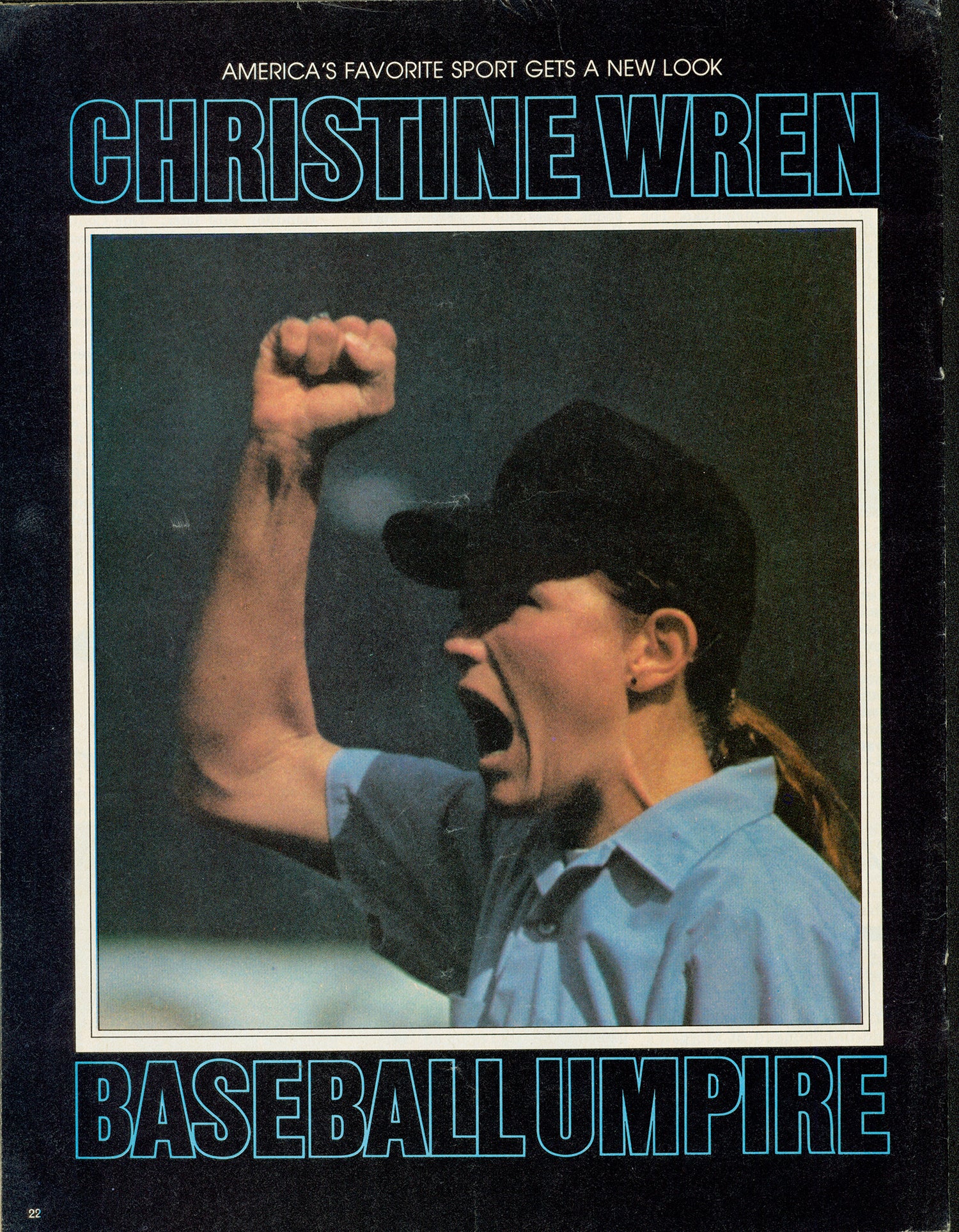
Umpire Unmasked: Christine Wren Opens Up About Her Life As a Baseball Pioneer

Umpires Break Through Glass Ceiling
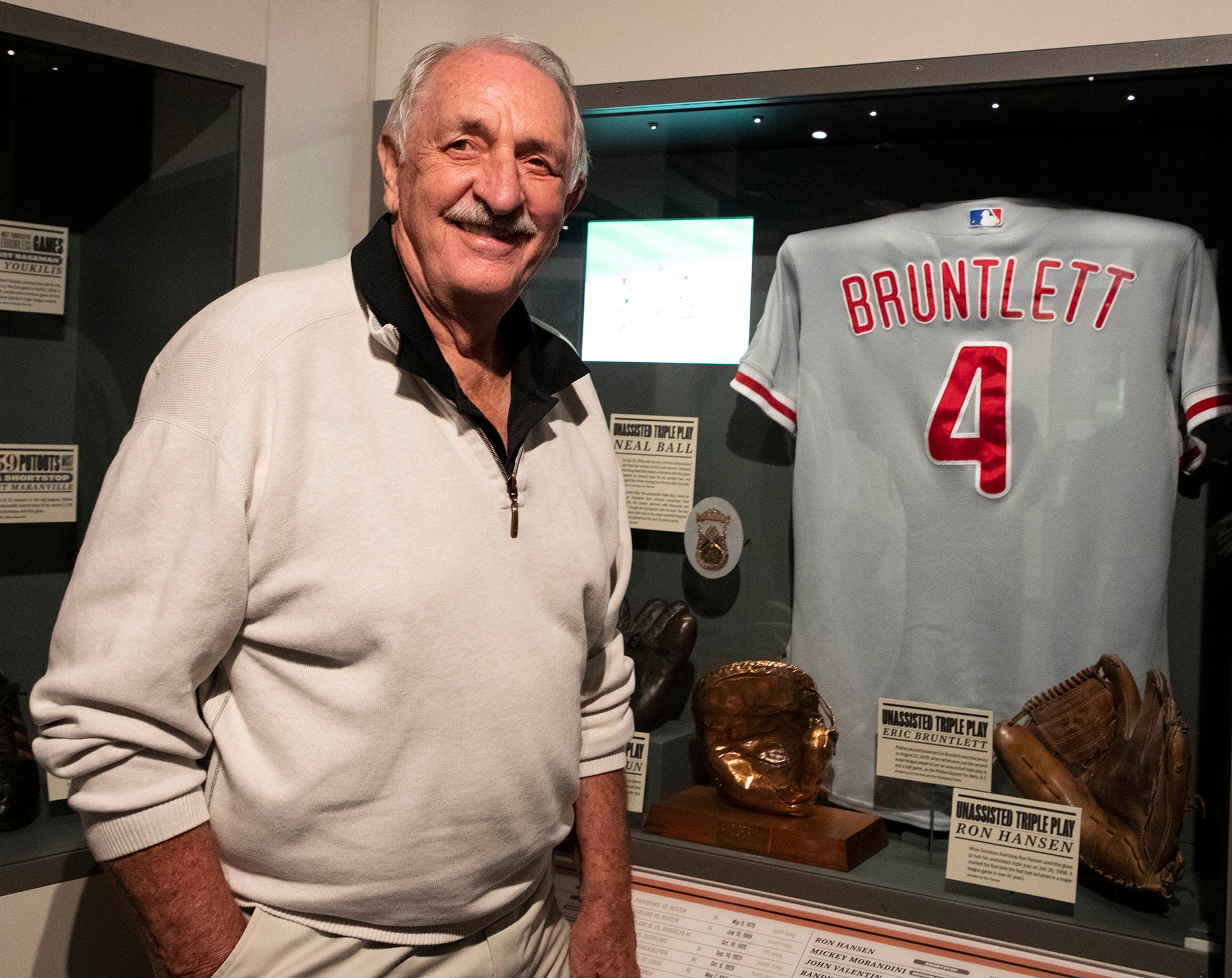
Ron Hansen’s triple play

Umpire Unmasked: Christine Wren Opens Up About Her Life As a Baseball Pioneer

Umpires Break Through Glass Ceiling


